
Alta Via 1: The Jewel of the Dolomites
Explore Alta Via 1 on an awe-inspiring hike through the Dolomites, featuring stunning alpine scenery, rich cultural heritage, and charming mountain huts.
Alta Via 1 is a stunning high-altitude trail located in the heart of the Dolomites in Italy. Known for its breathtaking alpine scenery, this long-distance hiking route stretches over 120 kilometers from Lago di Braies to Belluno. Hikers are treated to a diverse landscape, from lush meadows and dense forests to rugged peaks and serene mountain lakes. The trail is divided into manageable stages, each offering unique views and experiences. Along the way, you will find charming rifugios (mountain huts) where you can rest and enjoy traditional Italian cuisine. The hospitality of the local people and the rich cultural heritage of the region add a special touch to the adventure. Whether you're an experienced hiker or a beginner, Alta Via 1 offers an unforgettable journey through one of the most beautiful mountain ranges in the world. The route is well-marked, making it accessible for those who want to immerse themselves in nature and escape the hustle and bustle of everyday life.
Local tips in Alta Via 1
- Plan your hike between June and September for the best weather conditions.
- Carry a map and a GPS device as the weather can change quickly in the mountains.
- Book your rifugio accommodations in advance, especially during peak season.
- Pack light but ensure you have essentials like a good pair of hiking boots, layered clothing, and ample water.
- Learn a few basic Italian phrases to enhance your interaction with locals.
Alta Via 1: The Jewel of the Dolomites
Alta Via 1 is a stunning high-altitude trail located in the heart of the Dolomites in Italy. Known for its breathtaking alpine scenery, this long-distance hiking route stretches over 120 kilometers from Lago di Braies to Belluno. Hikers are treated to a diverse landscape, from lush meadows and dense forests to rugged peaks and serene mountain lakes. The trail is divided into manageable stages, each offering unique views and experiences. Along the way, you will find charming rifugios (mountain huts) where you can rest and enjoy traditional Italian cuisine. The hospitality of the local people and the rich cultural heritage of the region add a special touch to the adventure. Whether you're an experienced hiker or a beginner, Alta Via 1 offers an unforgettable journey through one of the most beautiful mountain ranges in the world. The route is well-marked, making it accessible for those who want to immerse themselves in nature and escape the hustle and bustle of everyday life.
When is the best time to go to Alta Via 1?
Iconic landmarks you can’t miss
Pragser Wildsee
Discover the breathtaking beauty of Pragser Wildsee, a stunning lake in the Dolomites, where nature captivates and adventure awaits in South Tyrol.

Lake Braies
Discover the enchanting beauty of Lake Braies, a must-visit natural wonder in the Dolomites, perfect for outdoor enthusiasts and tranquility seekers.

Rifugio Lagazuoi
Discover the charm of Rifugio Lagazuoi, a stunning mountain cabin in the Dolomites offering breathtaking views and delicious local cuisine.

Hotel Lago di Braies
Discover the breathtaking beauty of Hotel Lago di Braies, a serene escape in the heart of the Dolomites offering luxurious comfort and stunning views.
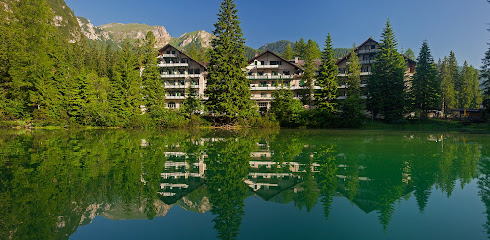
Rifugio Averau
Experience the best of Italian cuisine and breathtaking mountain views at Rifugio Averau in the heart of the Dolomites.

Scotoni Hütte
Experience the stunning Dolomites at Scotoni Hütte, where breathtaking views meet authentic Italian cuisine in a cozy mountain retreat.

Rifugio Città di Fiume
Discover the serene beauty of Rifugio Città di Fiume, a mountain cabin in the Dolomites, perfect for outdoor adventures and cozy retreats.

Rifugio Adolfo Sonino al Coldai
Discover the enchanting Rifugio Adolfo Sonino al Coldai, a mountain hut in the Dolomites offering rustic charm and delicious local cuisine amidst breathtaking scenery.

Rifugio Lavarella
Experience the serene beauty of the Dolomites at Rifugio Lavarella, a charming mountain cabin offering local cuisine and breathtaking views.

Lago Coldai
Experience the breathtaking beauty of Lago Coldai, a serene alpine lake in the heart of the Dolomites, perfect for nature lovers and adventure seekers.

Malga Ra Stua
Discover the enchanting Malga Ra Stua, an alpine retreat in the Dolomites, where stunning landscapes and traditional cuisine create the perfect getaway.

Rifugio Bruto Carestiato
Experience the beauty of the Dolomites at Rifugio Bruto Carestiato, a cozy mountain cabin offering delicious cuisine and breathtaking views.

Rifugio Biella
Discover the charm of Rifugio Biella, a mountain cabin in Cortina d'Ampezzo, where stunning vistas meet delightful local cuisine in the heart of the Dolomites.

Hotel Ristorante Steinerhof
Discover the beauty of the Pustertal Valley at Hotel Ristorante Steinerhof, where authentic Italian cuisine meets warm hospitality in South Tyrol.

Rifugio Tissi
Experience the charm of Rifugio Tissi, a mountain cabin offering cozy lodging and breathtaking views in the stunning Dolomites of Italy.

Unmissable attractions to see
Parco Naturale Tre Cime
Discover Parco Naturale Tre Cime, a stunning UNESCO World Heritage site in South Tyrol, perfect for hiking, wildlife watching, and breathtaking mountain views.

Fanes-Sennes-Braies Natural Park
Explore the stunning landscapes and diverse wildlife of Fanes-Sennes-Braies Natural Park in South Tyrol, Italy, a paradise for nature lovers and adventure seekers.

Lake Braies
Experience the stunning natural beauty and tranquility of Lake Braies, a must-visit alpine paradise in the heart of the Dolomites.

Duomo di Bolzano
Discover the breathtaking Duomo di Bolzano, a Gothic cathedral embodying centuries of history and artistic beauty in the heart of South Tyrol.

Brixner Dom
Discover the timeless beauty and rich history of Brixner Dom, a stunning Baroque cathedral in the heart of Brixen, South Tyrol.

Messner Mountain Museum Ripa
Explore the Messner Mountain Museum Ripa, a unique blend of alpine culture, art, and breathtaking views in the heart of Bruneck, South Tyrol.

MMM Corones
Explore the rich history of mountaineering at MMM Corones, a stunning heritage museum set against the breathtaking backdrop of the Dolomites.

Kurpark
Discover tranquility at Kurpark in Niederdorf, a serene park with lush greenery, scenic paths, and a charming lake, perfect for relaxation and family fun.

Ortisei - Val Gardena
Explore Ortisei in Val Gardena, a picturesque alpine village offering breathtaking landscapes, outdoor adventures, and rich cultural experiences in the heart of the Dolomites.

Forcella Lavaredo
Experience the breathtaking beauty of Forcella Lavaredo, a jewel in the Dolomites famed for stunning views and unforgettable hiking adventures.
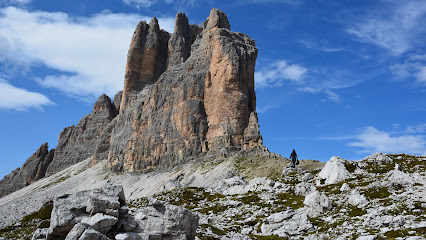
Castel Mareccio
Explore the enchanting Castel Mareccio in Bolzano, a historical castle offering stunning views, rich culture, and beautiful gardens.

Adrenaline X-Treme Adventures
Experience the thrill of a lifetime at Adrenaline X-Treme Adventures, the ultimate amusement park in the heart of South Tyrol's stunning landscapes.

Rifugio Lavarella
Discover the serene charm of Rifugio Lavarella, a mountain cabin nestled in the breathtaking Dolomites of South Tyrol, Italy.

Lago Coldai
Discover the serene beauty of Lago Coldai, a stunning alpine lake in the Dolomites, perfect for outdoor adventures and nature retreats.

Fassa Valley
Explore the breathtaking Fassa Valley in Trento, a paradise for outdoor activities and cultural experiences amid stunning natural beauty.

Essential places to dine
Emilio-Comici-Hütte
Discover Emilio-Comici-Hütte: A culinary gem nestled in the Dolomites offering traditional dishes with breathtaking views.
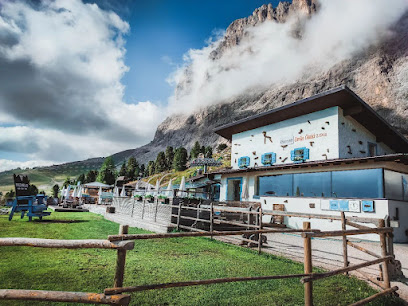
Hotel Lago di Braies
Experience breathtaking views and nature’s beauty at Hotel Lago di Braies - your perfect getaway in South Tyrol.

Scotoni Hütte
Discover Scotoni Hütte: where authentic Italian cuisine meets breathtaking alpine views in the heart of South Tyrol's Dolomites.

Almgasthof Mont Seuc
Discover exquisite South Tyrolean cuisine amidst breathtaking mountain views at Almgasthof Mont Seuc.

Alpine Restaurant Piz Arlara
Experience exquisite South Tyrolean cuisine at Alpine Restaurant Piz Arlara while soaking in breathtaking Dolomite mountain views.

Baita Cuca
Discover Baita Cuca in Santa Cristina Valgardena for authentic South Tyrolean cuisine amidst stunning alpine scenery.

Malga Foresta
Discover authentic South Tyrolean cuisine amidst breathtaking Dolomite landscapes at Malga Foresta.

Malga Aloch
Discover Malga Aloch: A Culinary Retreat in San Giovanni di Fassa Offering Authentic Alpine Flavors Amidst Stunning Scenery.

AdlerKeller
Experience authentic South Tyrolean cuisine at AdlerKeller, where quality meats meet stunning alpine views.

AlpiNN
Discover AlpiNN - where Mediterranean cuisine meets breathtaking alpine views in the heart of South Tyrol.

Gostner Schwaige
Experience authentic South Tyrolean cuisine amidst breathtaking mountain views at Gostner Schwaige in Seiseralm.

Rifugio Lee
Experience authentic South Tyrolean cuisine at Rifugio Lee while soaking in breathtaking mountain views in Badia.

Gasthof Dolomiten
Experience authentic South Tyrolean hospitality at Gasthof Dolomiten – your gateway to the stunning Dolomites.
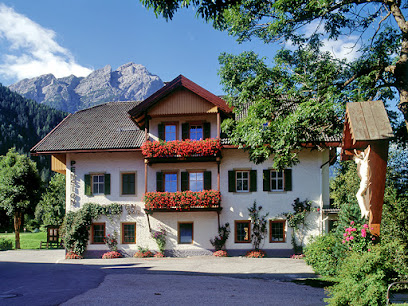
Col Alt
Experience exquisite South Tyrolean cuisine at Col Alt with breathtaking views in the heart of the Dolomites.
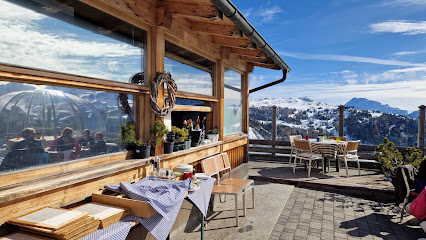
El Camineto
Discover El Camineto: A delightful Italian restaurant in Cortina d'Ampezzo offering exquisite cuisine and stunning mountain views.
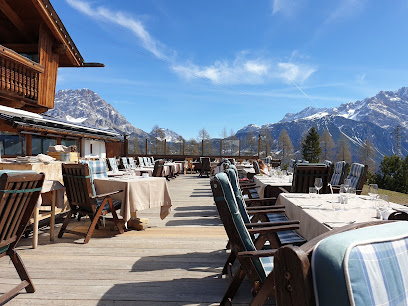
Markets, malls and hidden boutiques
Coin
Explore Coin, a premier dress store in Rome, offering a stylish selection of fashion, cosmetics, and accessories for a complete shopping experience.

Rifugio Lagazuoi
Discover the enchanting Rifugio Lagazuoi, a mountain cabin in the Dolomites offering stunning views, cozy accommodations, and delicious local cuisine.

Rifugio Nuvolau
Explore the breathtaking vistas and savor local delicacies at Rifugio Nuvolau, a must-visit mountain cabin in the heart of the Dolomites.
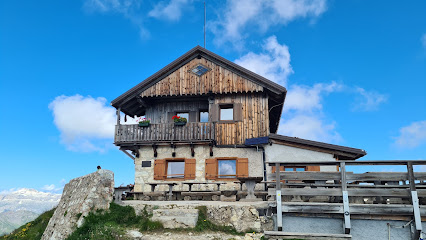
Rifugio Adolfo Sonino al Coldai
Experience the charm of Rifugio Adolfo Sonino al Coldai, a mountain hut offering breathtaking views and authentic alpine cuisine in the Dolomites.

BAD MOOS – Aqua Spa Resort
Discover the perfect blend of wellness, luxury, and adventure at BAD MOOS – Aqua Spa Resort in the stunning Dolomites.

Cisalfa Sport Roma Largo Brindisi
Discover Cisalfa Sport in Rome for premium sporting goods, from apparel to equipment, perfect for the active traveler exploring the Eternal City.

Rifugio Col Gallina
Experience the breathtaking beauty and rustic charm of Rifugio Col Gallina, a serene mountain cabin in the heart of the Dolomites.

Fanes Hütte
Experience the charm of Fanes Hütte, a serene mountain cabin offering delightful cuisine and breathtaking views in the heart of the Dolomites.

Sennes Hütte
Experience the stunning Dolomites at Sennes Hütte, a charming mountain cabin offering a peaceful retreat and authentic South Tyrolean cuisine.

Dolomiti Superski
Experience the breathtaking beauty and thrilling adventures of Dolomiti Superski, a premier ski resort in the heart of the Dolomite Mountains.

Rifugio Fodara Vedla
Experience the serene beauty and local flavors at Rifugio Fodara Vedla, a mountain cabin in the Dolomites perfect for relaxation and adventure.

Rifugio Biella
Experience the serene beauty of the Dolomites at Rifugio Biella, a charming mountain cabin perfect for nature lovers and adventure seekers.

Rifugio Mario Vazzoler
Experience the serene beauty of the Dolomites at Rifugio Mario Vazzoler, a cozy mountain cabin offering local cuisine and stunning alpine views.

The Kingdom Of Shoe
Discover exquisite footwear at The Kingdom of Shoe in Rome, where Italian craftsmanship meets contemporary style for every occasion.

GSI grow-shop-italia
Discover the ultimate gardening supplies at GSI Grow-Shop Italia in Rome, where expert advice meets a vibrant selection of plants and landscaping materials.

Essential bars & hidden hideouts
Hotel Lago di Braies
Discover the flavors of South Tyrol at Hotel Lago di Braies, where culinary excellence meets breathtaking natural beauty.

Harry's Bar
Discover the elegance of Harry's Bar in Rome, where fine dining meets live music in a historic setting.

Almgasthof Mont Seuc
Experience the flavors of South Tyrol at Almgasthof Mont Seuc, a delightful restaurant in the heart of the Dolomites, perfect for every food lover.

Ristorante Malga Peniola
Discover the flavors of Trentino at Ristorante Malga Peniola, where authentic Italian cuisine meets breathtaking mountain views.

Alpine Restaurant Piz Arlara
Experience the flavors of the Alps at Alpine Restaurant Piz Arlara, where breathtaking mountain views meet exquisite local cuisine.
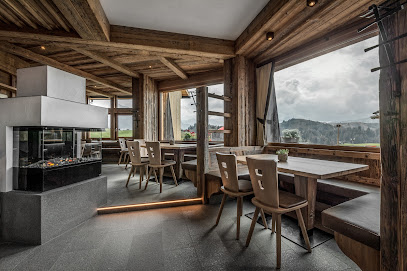
Baita Cuca
Experience the flavors of the Dolomites at Baita Cuca, a restaurant offering local cuisine and stunning mountain views in Santa Cristina Valgardena.

Malga Foresta
Experience authentic South Tyrolean cuisine amidst the breathtaking landscapes of the Dolomites at Malga Foresta.

Malga Aloch
Discover the charm of Malga Aloch, a restaurant in the Dolomites offering exquisite local cuisine and breathtaking mountain views.

Ristorante Rifugio Ospitale
Experience the best of Italian cuisine at Ristorante Rifugio Ospitale, set in the picturesque Dolomites of Cortina d'Ampezzo.

Rifugio Lee
Experience the authentic flavors of South Tyrol at Rifugio Lee, a cozy restaurant surrounded by breathtaking Dolomite mountains.

Restaurant Lake Scin
Experience authentic Dolomite cuisine at Restaurant Lake Scin, where breathtaking views meet exquisite flavors in a cozy alpine setting.

Huber Alm
Discover the flavors of the Alps at Huber Alm, where authentic cuisine meets breathtaking mountain views in South Tyrol.

Hofstatt Alm
Experience authentic South Tyrolean cuisine and breathtaking mountain views at Hofstatt Alm, your perfect alpine getaway.

Ristorante Lago Pianozes di alberti massimo
Experience exceptional Italian cuisine with stunning views at Ristorante Lago Pianozes in the heart of Cortina d'Ampezzo's breathtaking Dolomites.

Ütia Crëp de Munt
Experience the delightful flavors of South Tyrol at Ütia Crëp de Munt, a mountain restaurant surrounded by breathtaking Dolomite views.

Local Phrases about Alta Via 1
-
- HelloCiao
[chow] - GoodbyeArrivederci
[ah-ree-veh-dehr-chee] - YesSì
[see] - NoNo
[noh] - Please/You're welcomePer favore/Prego
[pehr fah-voh-reh/preh-goh] - Thank youGrazie
[grah-tsee-eh] - Excuse me/SorryMi scusi/Scusa
[mee skoo-zee/skoo-sah] - How are you?Come stai?
[koh-meh stai] - Fine. And you?Bene. E tu?
[beh-neh. eh too] - Do you speak English?Parli inglese?
[pahr-lee een-gleh-zeh] - I don't understandNon capisco
[nohn kah-pee-skoh]
- HelloCiao
-
- I'd like to see the menu, pleaseVorrei vedere il menu, per favore
[vohr-ray veh-deh-reh eel meh-noo, pehr fah-voh-reh] - I don't eat meatNon mangio carne
[nohn mahn-joh kahr-neh] - Cheers!Salute!
[sah-loo-teh] - I would like to pay, pleaseVorrei pagare, per favore
[vohr-ray pah-gah-reh, pehr fah-voh-reh]
- I'd like to see the menu, pleaseVorrei vedere il menu, per favore
-
- Help!Aiuto!
[ah-yoo-toh] - Go away!Vai via!
[vah-ee vee-ah] - Call the Police!Chiama la Polizia!
[kyah-mah lah poh-lee-tsee-ah] - Call a doctor!Chiama un dottore!
[kyah-mah oon doh-toh-reh] - I'm lostMi sono perso
[mee soh-no pehr-soh] - I'm illMi sento male
[mee sehn-toh mah-leh]
- Help!Aiuto!
-
- I'd like to buy...Vorrei comprare...
[vohr-ray kohm-prah-reh] - I'm just lookingSto solo guardando
[stoh soh-loh gwar-dahn-doh] - How much is it?Quanto costa?
[kwahn-toh koh-stah] - That's too expensiveÈ troppo caro
[eh troh-poh kah-roh] - Can you lower the price?Puoi abbassare il prezzo?
[pwah-ee ahb-bahs-sah-reh eel preh-tsoh]
- I'd like to buy...Vorrei comprare...
-
- What time is it?Che ora è?
[keh oh-rah eh] - It's one o'clockÈ l'una
[eh loo-nah] - Half past (10)Le dieci e mezza
[leh dee-eh-chee eh meh-tzah] - MorningMattina
[mah-tee-nah] - AfternoonPomeriggio
[poh-meh-ree-joh] - EveningSera
[seh-rah] - YesterdayIeri
[yeh-ree] - TodayOggi
[oh-jee] - TomorrowDomani
[doh-mah-nee] - 1Uno
[oo-noh] - 2Due
[doo-eh] - 3Tre
[treh] - 4Quattro
[kwah-troh] - 5Cinque
[cheen-kweh] - 6Sei
[seh-ee] - 7Sette
[seht-teh] - 8Otto
[oh-toh] - 9Nove
[noh-veh] - 10Dieci
[dee-eh-chee]
- What time is it?Che ora è?
-
- Where's a/the...?Dov'è un/il...
[doh-veh oon/eel] - What's the address?Qual è l'indirizzo?
[kwahl eh leen-dee-reetz-soh] - Can you show me (on the map)?Puoi mostrarmi (nella mappa)?
[pwah-ee mohs-treh-ar-mee (neh-lah mahp-pah)] - When's the next (bus)?Quando è il prossimo (autobus)?
[kwahn-doh eh eel prohs-shee-moh (ow-toh-boos)] - A ticket (to ....)Un biglietto (per ....)
[oon bee-lyet-toh (pehr)]
- Where's a/the...?Dov'è un/il...
History of Alta Via 1
-
The Dolomites, where Alta Via 1 is situated, have been inhabited since prehistoric times. Archaeological findings suggest that Mesolithic hunter-gatherers roamed these mountains around 8000 BC. Later, the Rhaetians, an ancient Alpine tribe, settled in the region, leaving behind petroglyphs and other artifacts that hint at their way of life.
-
The Dolomites came under Roman control around 15 BC, when the region was incorporated into the Roman Empire. The Romans constructed roads and fortifications, integrating the area into their vast network of trade and communication. Evidence of Roman infrastructure can still be found in the valleys and mountain passes along the Alta Via 1 route.
-
During the Middle Ages, the Dolomites became part of the County of Tyrol. The region was dotted with castles and fortresses, many of which still stand today. This period saw the development of alpine agriculture and the establishment of small villages and hamlets that are now picturesque stops along the Alta Via 1.
-
The Dolomites were a significant front during World War I, known as the 'White War' due to the harsh winter conditions. The Italian and Austro-Hungarian armies fought fiercely in this rugged terrain. Remnants of trenches, tunnels, and fortifications are still visible along the Alta Via 1, serving as poignant reminders of the conflict.
-
After World War I, the Dolomites saw significant reconstruction efforts. In the 20th century, the region transitioned from a war-torn landscape to a burgeoning tourist destination. The establishment of the Alta Via 1 in the 1960s marked a key moment in this transformation, as the trail was designed to showcase the natural beauty and historical significance of the Dolomites.
-
In 2009, the Dolomites were designated as a UNESCO World Heritage Site, recognizing their unique geological formations and stunning landscapes. This designation has helped to preserve the natural environment and promote sustainable tourism along the Alta Via 1, ensuring that future generations can enjoy its beauty and historical richness.
-
The Alta Via 1 passes through regions where Ladin culture is still vibrant. The Ladins are a small ethnic group with their own language and customs. Traditional Ladin architecture, festivals, and cuisine add a rich cultural layer to the hiking experience, allowing travelers to immerse themselves in the local heritage.
Alta Via 1 Essentials
-
Alta Via 1 is a renowned hiking trail in the Dolomites, Northern Italy. The nearest major airports are Venice Marco Polo Airport (VCE) and Treviso Airport (TSF). From these airports, you can take a train or bus to the starting point in Dobbiaco (Toblach). The journey from Venice to Dobbiaco takes approximately 3-4 hours by public transport. Alternatively, you can rent a car for more flexibility.
-
Public transportation in the Dolomites is well-organized. Buses and trains connect major towns and trailheads. Local buses are operated by SAD and provide services to and from Dobbiaco, Cortina d'Ampezzo, and other key points along the trail. Consider purchasing a regional transport pass for convenience. Taxis are available but can be expensive. Renting a car offers the greatest flexibility, especially if you plan to explore areas off the main trail.
-
The currency used in Italy is the Euro (EUR). Credit and debit cards are widely accepted in hotels, restaurants, and shops. However, it is advisable to carry some cash, especially for small purchases and in remote areas. ATMs are available in larger towns such as Dobbiaco and Cortina d'Ampezzo, but may be sparse along the trail, so withdraw enough cash beforehand.
-
Alta Via 1 is generally safe for tourists. However, standard travel precautions should be taken. Avoid hiking alone, especially if you are unfamiliar with the terrain. Stay on marked trails and be aware of weather conditions, as they can change rapidly in the mountains. There are no specific high-crime areas targeting tourists, but always keep an eye on your belongings, especially in crowded places.
-
In case of an emergency, dial 112 for immediate assistance. Mountain rescue services are well-coordinated in the Dolomites. It is highly recommended to have travel insurance that covers medical emergencies and mountain rescue. For minor health issues, pharmacies are available in larger towns such as Dobbiaco and Cortina d'Ampezzo. Always inform someone of your hiking plans and estimated return time.
-
Fashion: Do wear appropriate hiking gear. Layered clothing, sturdy boots, and weather-appropriate attire are essential. Avoid wearing overly casual or beachwear in towns. Religion: Respect local customs when visiting churches or religious sites. Dress modestly and keep noise to a minimum. Public Transport: Do validate your ticket before boarding buses and trains. Don't eat or drink on public transport. Greetings: A polite 'Buongiorno' (Good morning) or 'Buonasera' (Good evening) is appreciated. Handshakes are common. Eating & Drinking: Do try local delicacies and regional wines. Don't rush meals; Italians value leisurely dining.
-
To experience Alta Via 1 like a local, consider staying in rifugios (mountain huts) along the trail. These offer an authentic experience and the chance to meet fellow hikers. Engage with locals and fellow hikers to learn about the best routes and hidden gems. Visit local markets to sample regional produce and artisanal goods. If you have time, explore nearby towns such as Cortina d'Ampezzo for a taste of local culture and history.
Trending Landmarks in Alta Via 1
Nearby Cities to Alta Via 1
-
Things To Do in Kitzbühel
-
Things To Do in Zell am See
-
Things To Do in Bad Gastein
-
Things To Do in St. Anton am Arlberg
-
Things To Do in Davos
-
Things To Do in St. Moritz
-
Things To Do in Venice
-
Things To Do in Verona
-
Things To Do in Arosa
-
Things To Do in Kranjska Gora
-
Things To Do in Salzburg
-
Things To Do in Munich
-
Things To Do in Dornbirn
-
Things To Do in Nova Gorica
-
Things To Do in Triesenberg













